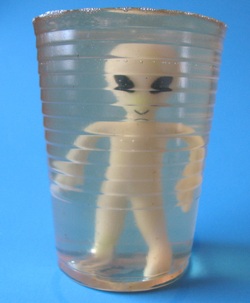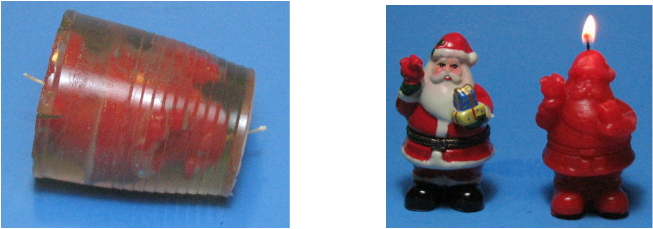
Video 1- How to make the molding material.
Video 2- How to use the molding material.
Making and molding for duplication is a great way to replicate parts. It is a process that has a very long history and technology has made the molding and casting of many materials possible. And each process comes with some positive aspects and some negative ones. One of the most successful products has been the use of RTV Silicone, a two-part flexible elastomer that can be catalyzed by either a tin or platinum reactant. Mixed 1:1, and poured over the part to be copied, the results are typically excellent. It provides fine detail, de-molds fairly quickly, can be used to cast many times, generally requires no release agent, has high heat tolerance, and it is dimensionally stable. But, the advantages come with high cost, limited shelf life, and of course, it is not reusable. Once you are finished with the mold it is discarded. And urethanes are possibly the next most popular with casting enthusiasts. Despite the vast array of materials, none are really reusable. They are all relegated to the trash bin when they fail to perform satisfactorily or are no longer needed. But, I do have an alternative for your consideration. It is a reusable, inexpensive, and very functional molding material based on gelatin as the elastomer, glycerin as the plasticizer, and water to form the colloidal suspension.
I have been using this molding material for several years and it was initially developed to secure cover slips to microscope slides. At first I used agar, but that was expensive and difficult to find locally. So, I tried gelatin and glycerin and it worked really well. I noticed that when poured on a flat surface, it formed a flexible film that acted like rubber, had a melting point well above room temperature, and could form a mold. So, I used it for small items and general castings. But recently, I decided to try and make larger and more complicated molds and cast with epoxy resin, paraffin wax, polyester resin, and Plaster of Paris. The results are promising but there is still a lot of experimenting to do. But, I think that by posting the process now, some of the readers will be able to add their information in the comments section and we can all work together to make a better process. The basic formula is shown in video 1 and it is very easy to make. Initially, the first time it is formulated, a stovetop is best as continuous stirring is required. It can be made in a metal pan as well as in Pyrex containers or glass beakers. Containers are easily cleaned with hot water. Once the elastomer is made, it can be reheated in the microwave oven using short times until you learn how much time is needed. For small batches, (40 ml), I use about 10 seconds. (In microwave acceptable containers, not metal!). The mix does not require boiling and seems completely dissolved at around 160 Fahrenheit, (71 Celsius). It sets to a rubber-like elastomer at room temperature and remains flexible. Its actual melting point seems to be about 130 F. The flexibility can be varied by using less glycerin for a firmer gel, and more for a softer material. Without using a gelometer, my best guess is that it can vary from about a 15 Shore A to a 40 Shore A, and that compares favorably with Silicone RTV.
In video 2, actual molding results are demonstrated with the advantages and some downsides as well. I recently discovered some commercial products that are reusable but I have not investigated them yet. I mentioned in video 1 that chocolate can be cast as well but that process requires a higher quality glycerin. The material sold in drug stores is not as pure as what is called food grade glycerin. That is 99.9 % pure. It may be available in markets locally, but is definitely available online.
Basic Formula:
20 milliliters room temperature water.
4 grams unflavored gelatin.
24 milliliters glycerin.
Mix as demonstrated in video 1. I have been using a 10 times batch that is about 450 milliliters. Please enjoy the videos and comment! Ken…

 RSS Feed
RSS Feed
